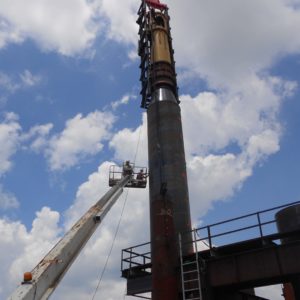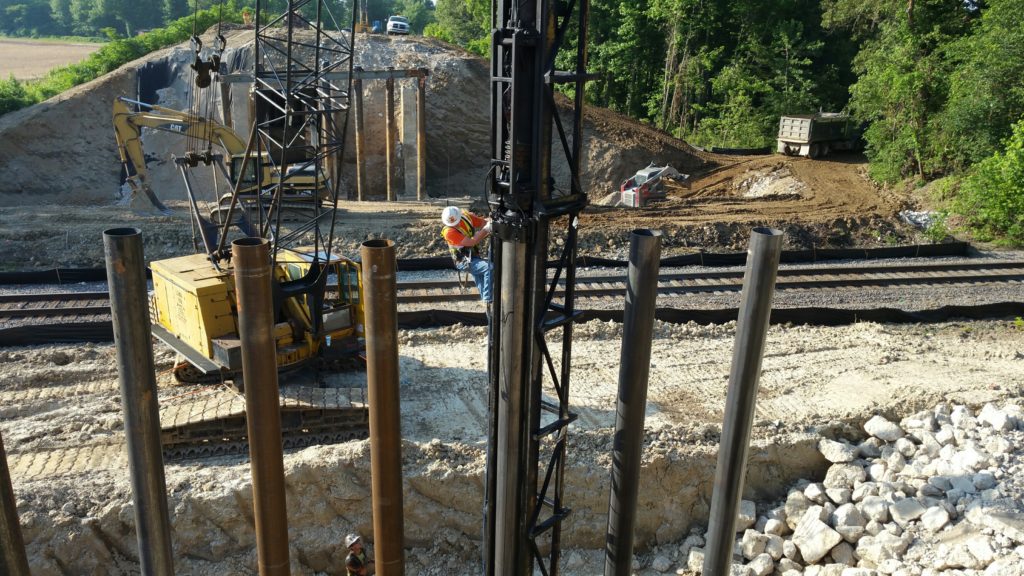
Deep foundations provide the key support for a wide range of buildings, bridges, towers, dams and other massive structures. The success of deep foundations is dependent upon a multitude of factors including but not limited to the type of pile and the type of driving equipment used to install them.
The foundation design and installation method for your project can be determined considering the unique and often widely varying soil conditions, and different magnitude and nature of applied loads. Each phase of the design, installation, inspection, and quality assurance testing is critical to the success of a deep foundation system in predicting if it meets its intended purpose without compromise. Unfortunately, once the building is completed, the foundation lies buried within the ground and cannot be conveniently reached for assessment or repair.
Construction schedules are tight, construction costs are high, and for some, it may seem that testing deep foundations is a waste of time and a place where costs can be cut. However, costs for quality control and testing are modest compared to the costs and complications of a foundation failure. Bad publicity alone for foundation failure is immeasurable and remediation costs are often as much if not more than the cost of the original foundation. High strain dynamic pile testing can be used to optimize the foundation design and assist in reducing the risks of foundation failure.
Advantages of high-strain dynamic testing over traditional static analysis testing include:
- Testing is applicable to any type of driven pile material and cast-in-place foundation methods
- Relatively little pile preparation is needed
- Piles and shafts can be randomly tested after installation
- It is more economical and significantly faster than static load testing
- Site variability is easily assessed by testing a higher percentage of piles on-site
- Structural integrity is evaluated in addition to load bearing capacity
- Testing can be easily performed at varying times to assess time dependent soil resistance
- Pile load bearing capacity and axial capacity of battered piles can be easily tested
 High-strain dynamic testing measures stress waves induced by hammer impacts. For driven piles, the driving hammer itself is used for testing. For cast-in-place shafts, a drop weight is needed. Data acquisition and real-time field analysis require a Pile Driving Analyzer (PDA) and at least two strain gages and two accelerometers. During testing the pile driving hammer performance, driving stresses, pile or structural integrity, and an estimate of the bearing capacity can all be monitored in real-time. Additional analysis should be performed using a “signal matching” program (i.e., CAPWAP) to verify field capacity estimates, estimate a resistance distribution, and provide a simulated static load test graph.
High-strain dynamic testing measures stress waves induced by hammer impacts. For driven piles, the driving hammer itself is used for testing. For cast-in-place shafts, a drop weight is needed. Data acquisition and real-time field analysis require a Pile Driving Analyzer (PDA) and at least two strain gages and two accelerometers. During testing the pile driving hammer performance, driving stresses, pile or structural integrity, and an estimate of the bearing capacity can all be monitored in real-time. Additional analysis should be performed using a “signal matching” program (i.e., CAPWAP) to verify field capacity estimates, estimate a resistance distribution, and provide a simulated static load test graph.
There are some limitations to high-strain dynamic testing. A large enough drop hammer is required on-site to test cast-in place shafts, data interpretation and analysis require experience and expertise, and elements of existing structures cannot be tested.
Geotechnology currently has two PDA units along with the associated support equipment and staff with an excess of 20+ years’ experience in performing high-strain dynamic testing and analysis. Our projects have included the I-40/I-240 interchange in Memphis, Tennessee, a new Nucor facility in León, Mexico and various bridges for state Departments of Transportation including Arkansas, Mississippi, Missouri, and Tennessee.
